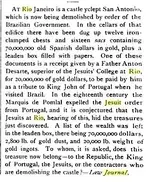Dang I hate to leave for a couple of days and the thread takes off. HAHAHA
First,
When I posted the "These bars Should Not Exist" version of the story (in 2007), I had not met the man yet. I hate to tell you this, but his name is NOT Bob. His initials are RQ. That's as far as I'll go with that. Here is the man himself and I while I was making those first ever hi res scans of his pics:

I know him quite well, and at one time, I was going to revive the old "Treasure Hunter's Confidential" Newsletter (until old owners started chiming in wanting money and such which killed the deal). RQ's story was one I wanted to have in the first edition. I was introduced to him through friends from Hollywood and Tumacacori at his place in Tucson. I was the first person he had EVER let make hi resolution scans of his old 35mm pics. Over the years, he had lost some of the old originals, so in place of the missing ones, I used the B&W versions from the "Treasure!" Magazine Article. I also have his handwritten version of the story (which is what I placed on my website). The 82 Pounds Story on my website can be considered the ONLY true and "from the horse's mouth" version. That, I give you my word on.
To your questions:
1. Agreed enough
2. Not overrated at all. When I say exceedingly rich, I mean that according to today's standards the pay streak would have been exceedingly rich in raw ore. Several books on the subject repeat the same thing, that the Spanish were lazy (I think that was in Rudo Ensayo), where it mentions if a mineral vein wasn't very high grade, the Spanish would ignore it. Also, several other books on the subject talk about it from monetary standpoint. That since the refining processes were so crude at the time, it would cost more to work a lower grade mine than would be gotten from processing the ore, so they left them alone. Those mines (by today's standards) would be called BONANZA MINES! HAHAHA With the Jesuits' Power in the area, even IF the Military did know about it, I doubt they would have ratted them out. The Spanish Prospectors might have never found much of what is there. The Jesuits had a "foot in the door" so to speak, because they were closest of all the people to the Indians. Indians were more likely to confess to Jesuits the locations of rich ledges of gold or silver, than to any Spaniard. If anybody doubts how much power and influence they had in the area, one has only to research the the story of the year spent in jail by then GENERAL Manje. Here is a good version of the story (but since it is from the Kino Heritage Society naturally Padre Kino is made to look heroic):
http://padrekino.com/kino-s-legacy/.../chapter-12-general-manje-writes-report-1705/
A SPANISH GENERAL, that was also very close with Padre Kino, got thrown on a donkey and made to ride 500 miles to jail for merely saying that the Jesuits were spending more time with the Indians than the Spanish. Tell General Manje that the Jesuits didn't have power and influence!
3. Actually, NOBODY just gets "handed" the Coadjutor Certificate. A coadjutor takes three of the four main vows of the Order (including The Vow of OBEDIENCE). The fourth is only taken when a Jesuit reaches the rank of Priest (which initiates most are unable to reach). There are people that are friendly with the Order, and remember, 99% of all the people in Spanish Colonial Times were Roman Catholic.
4. Agreed
5. Disagree here vehemently! HAHAHA In reading the Jesuit Priests' Journals, you can get a very good idea of the wealth of the Order. Talking about how well appointed the Churches were. Silver and Gold Church Vestments and adornments. Silver statues of Mary. Etc Etc Etc. Those are the words of the Jesuit Fathers themselves that had witnessed them personally. On the night of 25-26 June 1767, when the soldiers swooped in at the orders of the King of Spain and arrested all the Jesuits, they made thorough searches of every nook and cranny of EVERY Jesuit Cabacera, Colegio, Church, and Mission. The ONLY things they found were a few thousand pesos, and all the things that couldn't have been hidden (property, horses, cattle, sheep, etc). None of the gold or silver was found. Father Och's Journal even tells of Spanish soldiers diving into the "cell pool" of the place looking for loot. NOTHING! When Fray Serra OFP was given the task of founding the California Missions, he was told he could go into the old Jesuit Missions and Churches, and take what he needed. His list of what he found is available if you look for it. The wealth described by the Padres in their Journals was not there. It all just up and vanished right before the 25th of June 1767. Read the translation of the Molina Document:
Directions - year 1598 to 1658 - these Directions pertain to Tumacácori: The Mine of Tumacacori
called the Virgen of Guadalupe. It is a league and a half, beginning at the main door of the temple on the south. From the
Waters of San Ramón measured to the left (it is) 1800 rods to the north. Some 1200 rods before reaching the mine is a black
rock marked with a chisel with these marks on the bottom of the rock . 1200 rods from the cross is the treasure. This is
what the writing means. Some 20 rods in front of the rock is a small monument. In a southwest direction from the mine
are two rock outcroppings that were knocked down over the mine without more jarring than the placement of gunpowder in
the cracks of the rocks, leaving the track obliterated forever. Going over the rocks no one would know
where this place is. Inside the mine is a room that measures 50 rods square and in this place
is the treasure of our missions. In the middle of the room is the mouth of the mine, the treasure being (both)
inside and outside of it: There are 2650 loads of sealed silver and 905 of gold, and there are 40
million in (unsealed) silver. The gold was brought from the Sierra de Guachapa in the vicinity of Tubac: continue
forward in the same southerly direction.
Some three leagues from the mine of Nuestra Señora de Guadalupe what is called "Pass of the Janos."
In a direction to the south from here, an arroyo starts that empties into the Santa Cruz River. The mine is to the left of the pass.
Below the pass are 12 ore crushers and 12 smelters. The mine has one tunnel of 300 rods in length and the tunnel
has the name of La Purísima Concepción engraved on it with a chisel. The tunnel runs north and at 20 rods a small tunnel of
one hundred rods intersects it, running west. The ore is yellow - ore that is half silver and a fifth part gold. There are some slag
pits fifty rods from the door of the mine going north. They found chunks of pure silver
weighing from one pound to 5 arrobas (125 pounds). This mine is sealed by a copper door that has some enormous handles.
This copper was brought from the Sierra de Guachapa in the vicinity of Tubac and smelted in Tuma-
cácori, and the door was carried to the mine on a sledge by oxen. The year 1658. They worked and covered it
in 1658 as recorded in the book of works of the mission.
It is three leagues from the mine of La Purísima Concepción to the mine of Nuestra Señora de Guadalupe. About halfway
down the road in the same direction is what is called The Mine of the Opatas. This mine has one tunnel of four
hundred rods and running south along the same course. The ore is mixed with pebbles and after three hundred rods is
cut off by a trench. A very large tableland runs from the mouth of the mine toward the setting sun. On its west side
is a very large canyon ending on the south side. It has a bore mark that is a half-rod deep. Standing on the south side,
you can see the mark on the other side of the canyon. Going one league north from this mark is the Mine of the
Opatas of Tumacácori. This is the mark. To the west on the other side of the sierra is the mine of Nuestra Señora de
Guadalupe. It is marked by Father S--- R--- on the 12th of the month of December in 1518. This mine was found by a =
I highlighted a couple of things in that script. We think that "sealed" silver and gold mean church vestments and adornments that were worked and had a seal stamped onto them. Unsealed we think, means bars. Those that don't trust the Molina Document: If you read back some pages, you might catch a reference to a man that had a mappa and a page that described how to get to the mines. This description was from the 1860s. I think that is very likely the first mentioning of the Molina Document and map. Compare that inventory with what was found in Rio de Janiero in 1891:

Very large amounts of silver and gold in both cases. If this story was just in some Australian Newspaper, I wouldn't put a ton of faith in it, but if something like the Canada Law Review saw fit to include it, I give it a little more juice.
Like I said, we will very much disagree on this subject. There are enough people running around right now in all those areas that were then desert, to notice a bunch of folks dragging tons of loot out of mountains. HAHAHA My guess is that whatever they left hidden in 1767 is mostly still hidden. Like I said, the Church doesn't see time like we humans do. The Church is an organization that has been around for almost 2,000 years. It will probably be around for another 2,000. If it needs to let a few hundred million lie moldering in the ground for a few hundred years to keep their record clean, it is no loss to them.
Mike



 How much would you need to make it profitable to haul it away?
How much would you need to make it profitable to haul it away? 

 Mebbe the Apaches did it?
Mebbe the Apaches did it? 
